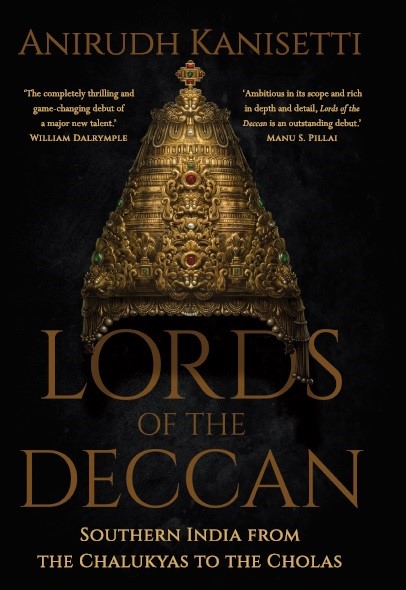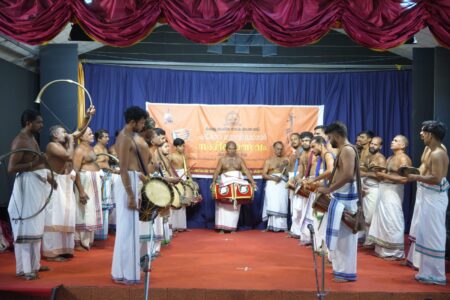Who wrote Kavirajamargam and how did it change the course of Kannada language during the Rashtrakuta rule?
Amoghavarsha Rashtrakuta, Vallabha of the Deccan, had, it seems, made a wise choice in relying on trade rather than the tribute and ceaseless warfare used by his predecessors to fund their politico-military machines. As his coffers swelled, the sophisticated young emperor finally had the resources for a different kind of magnum opus than we have seen up to this point.
After the setbacks he had faced early in his reign due to his inability to personally command and motivate his armies, Amoghavarsha had developed a flair for diplomacy and politics, an eye for talent, and a knack for promoting and inculcating loyalty. A master of literature and aesthetics, he now brought together an unprecedented concentration of poets and teachers to decorate his court at Manyakheta. He could have merely set them to the banal task of composing prashastis and dramas, but Amoghavarsha did something else, of exceptional vision, that would echo down to the very languages that Indians speak today.
Amoghavarsha’s court poet Srivijaya, working on guidelines laid down by the Vallabha, was given the task of composing a great manual of courtly Kannada grammar – the first the language had ever seen. This Kavi-raja-margam (The Way of the King of Poets) was the first text in the world to ‘self-consciously’ theorize the relationship between a vernacular language and the cosmopolitan Sanskrit, the domain of urban and courtly elites. This work reflects the extraordinary sophistication that the science of linguistics and poetics had reached in the subcontinent by this time; there is nothing comparable to it across the Afro-Eurasian world.

Amoghavarsha’s intention in propounding the Way of the King of Poets was to create a register of Kannada with aesthetic and poetic qualities comparable to the elite literature of the Sanskrit Cosmopolis. For this, the structure of older works on Sanskrit poetics – especially the Kavyadarsha of the old Pallava court poet Dandin – was systematically reworked to establish the grammatical, metrical and aesthetic rules this courtly Kannada would require.
Dandin’s text had marked out the limits of the Sanskrit-speaking universe, discussing the extent of the Indian subcontinent and the varieties of regional Sanskrit styles within it; now Amoghavarsha and Srivijaya did the same for the world of Kannada, declaring it to be the land between the Godavari and Kaveri rivers and classifying a ‘northern’ and ‘southern’ variety of Kannada poetic styles. ‘Sanskrit and Prakrit are well-established languages, with their characteristic features and examples,’ said the Rashtrakuta Vallabha and his poet.
‘It is difficult to create poetry in Kannada … With the native
language having so many variations, even Vasuki [the thousand-headed
king of serpents, the paragon of scholarship] would become
frustrated, unable to identify and fix the faults in the usage of
Kannada dialects.’
These ‘faults’ included unpalatable and harsh sounds, incorrect meanings and difficulty in comprehension – all of which were regarded with horror in Dandin’s Kavyadarsha. (It is debatable whether local Kannada poets, storytellers and singers, who had been plying their craft well before Amoghavarsha set out on this project, thought so harshly of their language, but their opinions have not survived.)

Southern India from the Chalukyas to the Cholas
By Anirudh Kanisetti; Juggernaut; 480 pages; Rs 699
Publishing date: 30 January 2022
In their newly developed courtly Kannada, the Vallabha and his poet now set out their own definition of Kannada literature, the qualities to be sought in its two varieties (poetry and prose), and the assorted blemishes they thought made Kannada poetry less than perfect. They also provided nearly two hundred examples – taken from older Sanskrit manuals but reworked into their new vision of Kannada literature – of the proper rules of composition and mixing of Sanskrit, Prakrit and Kannada sounds and grammatical rules. These were developed from deep scholarly engagement with well-established Sanskrit and Prakrit grammars, linguistics, aesthetics and rhetoric, as well as a detailed survey of extant Kannada poetry, prose and metres.
The purpose Amoghavarsha had in mind was clear: now, at last, Kannada could match the aesthetic and expressive capabilities of Sanskrit. At last, it could be a language of power and prestige and appear in the prashastis of kings; at last, it could be a language of beauty and be admitted into and celebrated in courts. It could compete with that ancient language of prestige on its own terms.
This new ‘courtly’ Kannada struck enormously fertile ground. Amoghavarsha’s hundreds of vassals and rivals, and their thousands of poets and panegyrists, now unleashed a new wave of literary production in their own language, a wave of literature that was more intelligible than Sanskrit was to their peers and subjects, more open to the participation of new social groups, and thus far more politically instrumental.
The transformation was immediate and dramatic: ‘the proportion of records in Sanskrit shrank from about 80 percent in the period 741–819 (the approximate level of the Badami [Vatapi] Caḷukyas) to 15 percent in the period 819–974’, and to a negligible 5 per cent by 996. Henceforth in the Deccan, Sanskrit, the once-dominant language of Indian literary, philosophical and scientific works, would increasingly be used with Kannada compounds, and in many cases be replaced by it altogether – except in some very significant cases, as we will see later in this book.
This was a landmark in the history of world literature, a moment of transformation. In addition to the emperor Amoghavarsha Rashtrakuta, the illustrious litterateurs involved in this project included Parama-Srivijaya (Paramount Victory of Fortune), Kavishvara (Lord of Poets), Panditachandra (Moon Among Pandits), and Lokapala (Guardian of the World). These titles were all honours granted to them by the emperor as rewards for their work. For all future Kannada poets – down to this very day, when there are more speakers of Kannada than the entire population of some countries – this moment would stand out as ‘a rupture in time, a moment of discontinuity, when something new began’.
It was the moment when predominantly Kannada-speaking polities began to shift their gaze from the Sanskrit Cosmopolis and its connections to subcontinent-wide cosmopolitan literary cultures, to audiences closer to home, more directly relevant to their political networks.
(Excerpted with permission from Juggernaut from the book Lords of the Deccan by Anirudh Kanisetti)
Write to us at [email protected]



